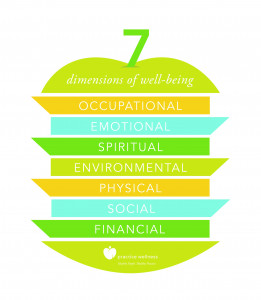 Well-being is more than simply the absence of disease. It is the full integration of social, emotional, spiritual, environmental, occupational, intellectual and physical wellness. These seven dimensions act, and interact, in a way that contributes to the overall quality of life.
Well-being is more than simply the absence of disease. It is the full integration of social, emotional, spiritual, environmental, occupational, intellectual and physical wellness. These seven dimensions act, and interact, in a way that contributes to the overall quality of life.
Over the next few issues of the NCMS Bulletin, Jason Horay, MS, ATC, CHES, the NCMS Plan Health Promotion Coordinator, will take you on a journey through each aspect of well-being, offering personal reflections and examples of ways to enhance each dimension within your workplace, community, and at home.
We encourage you to share this content with colleagues using social media and to share your ideas and personal experiences for enhancing your well-being by posting comments to the blog.
The next installment focuses on spiritual well-being.
Spiritual Well-being
Spiritual well-being is the ability to balance your inner needs with the needs of the world surrounding you to create a state of harmony. It is understanding the morals and values that guide and shape you, and the sense that your life has meaning and purpose.
Whether we realize it readily or not, we each have a code of ethics, values and morals that play a part in guiding us throughout life. During the search for spiritual well-being, a person may notice feeling a balance of both peace and frustration. It is important to realize the importance of negative emotions, such as frustration, doubt and fear, as well as the positive emotions, such as happiness and gratification. You will begin to experience harmony and spiritual wellness when your actions are driven by your beliefs.
I would encourage everyone to create your own Mission Statement based on your personal philosophy. A Mission Statement is about one to three sentences in length and dictates how you will navigate through all of life’s decisions based on your own set of beliefs. It is personal and does not have to be shared with anyone else. You may choose to display it somewhere you can see it every day.

